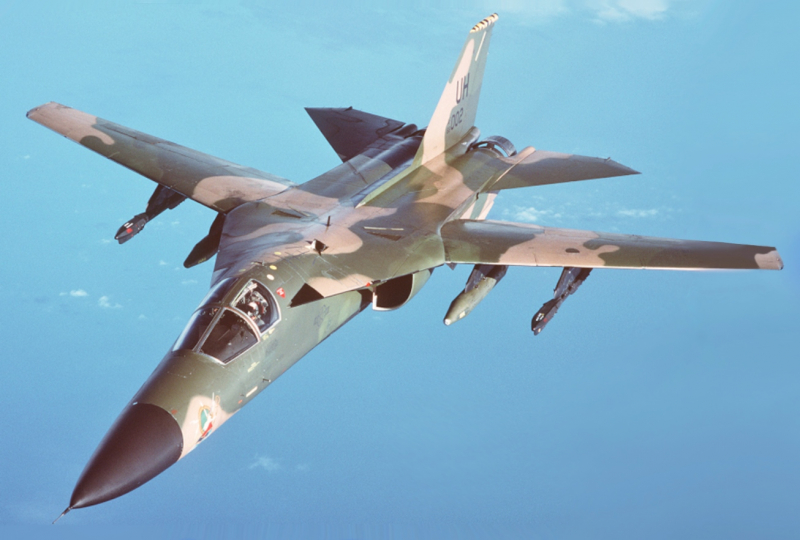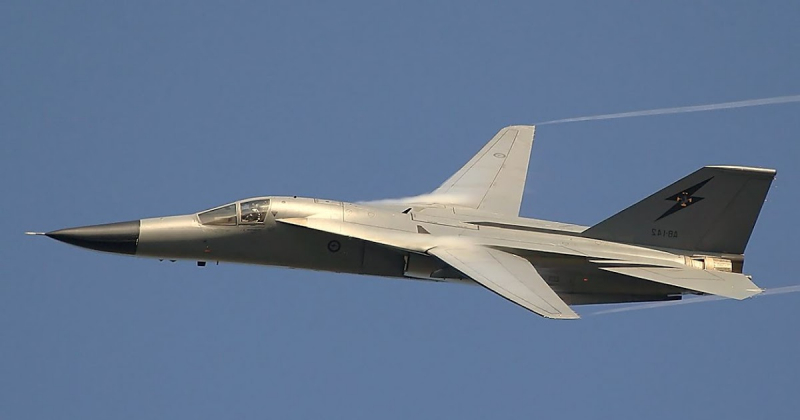General Dynamics F-111

It has taken on numerous roles over its various incarnations. In various circumstances, it has served as an interdictor, fighter bomber, and strategic bomber. The F-111, however, makes our list of the fastest airplanes of the present because of its capacity to attain supersonic speed.
The F-111 first appeared in the United States in the 1960s. The Royal Australian Air Force ordered this type of aircraft in the early 1970s. Several technologies, such as afterburning turbofan engines and sweep swings, have been pioneered by the F-111 over the years. It also has an automated terrain-following radar, which is useful during low-level, high-speed flights. The F-111 has a top speed of 2.5 Mach.
This aircraft was retired in the 1990s. Since its deployment, the F-111 has been produced in 563 units for the Royal Australian Air Force and the US Air Force.
Technical Notes
Armament: One 20mm M61A1 Vulcan cannon (later replaced by AN/AVQ-26 Pave Tack infra-red targeting pod), plus a mix of up to 24 conventional or nuclear weapons
Engines: Two Pratt & Whitney TF30-P-111s of 25,100 lbs. thrust each with afterburner
Range: 2,971 miles
Span: 32 ft. swept, 63 ft. extended
Length: 73 ft. 6 in.
Height: 17 ft.
Maximum speed: Mach 2.5











